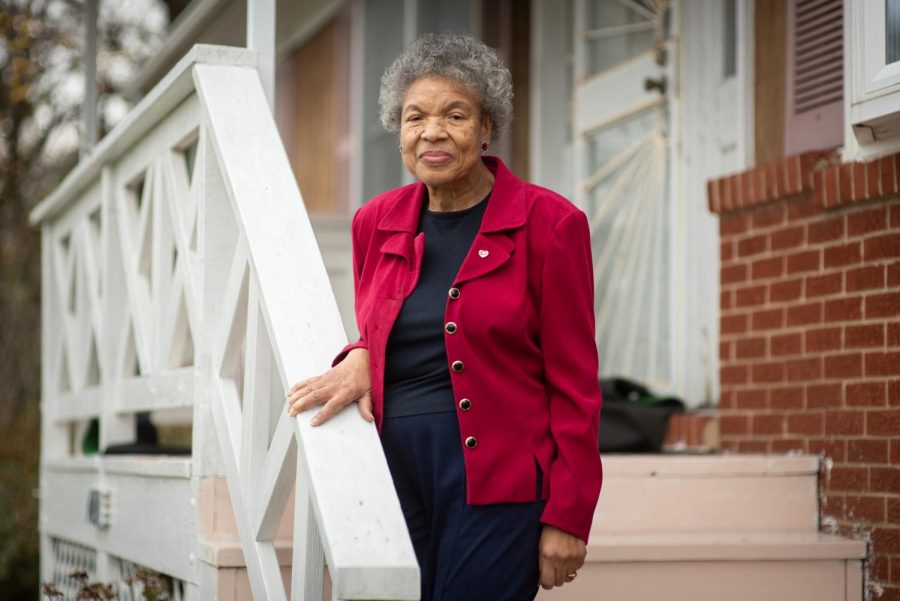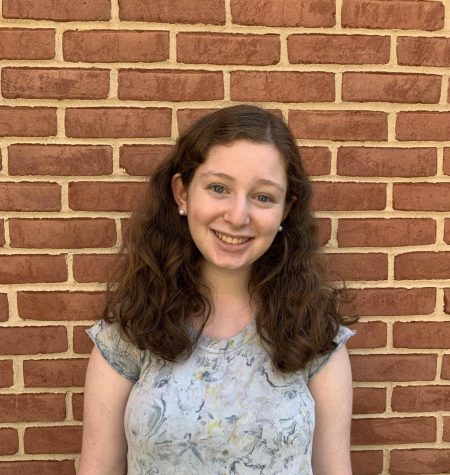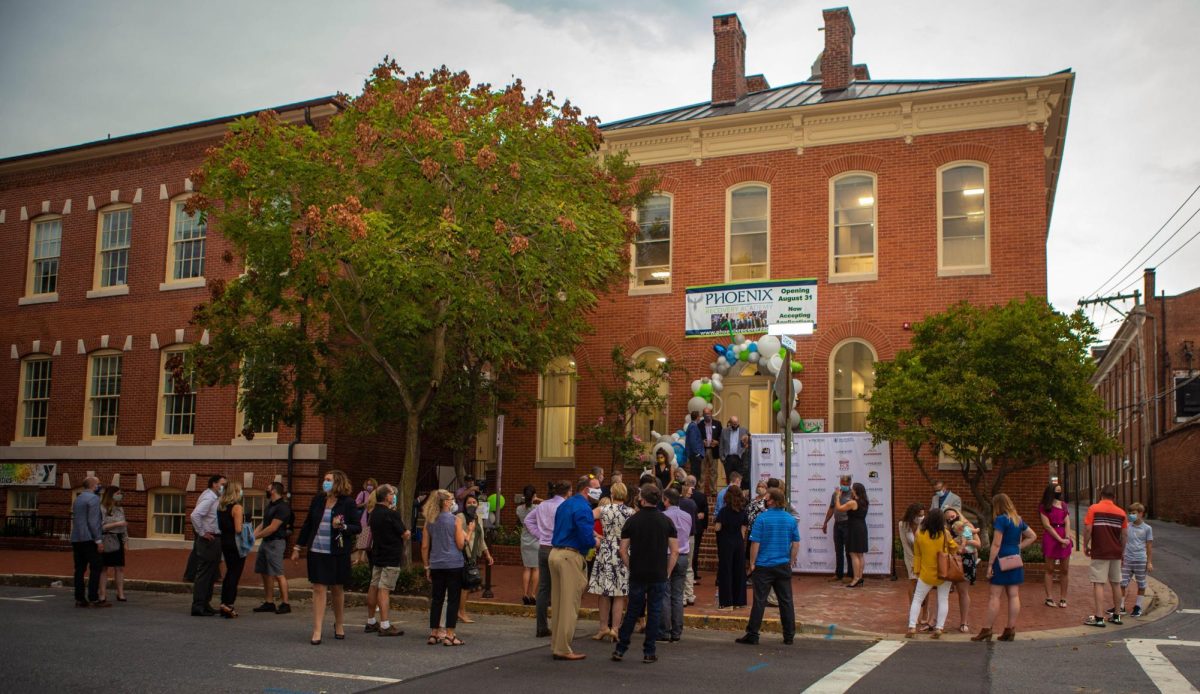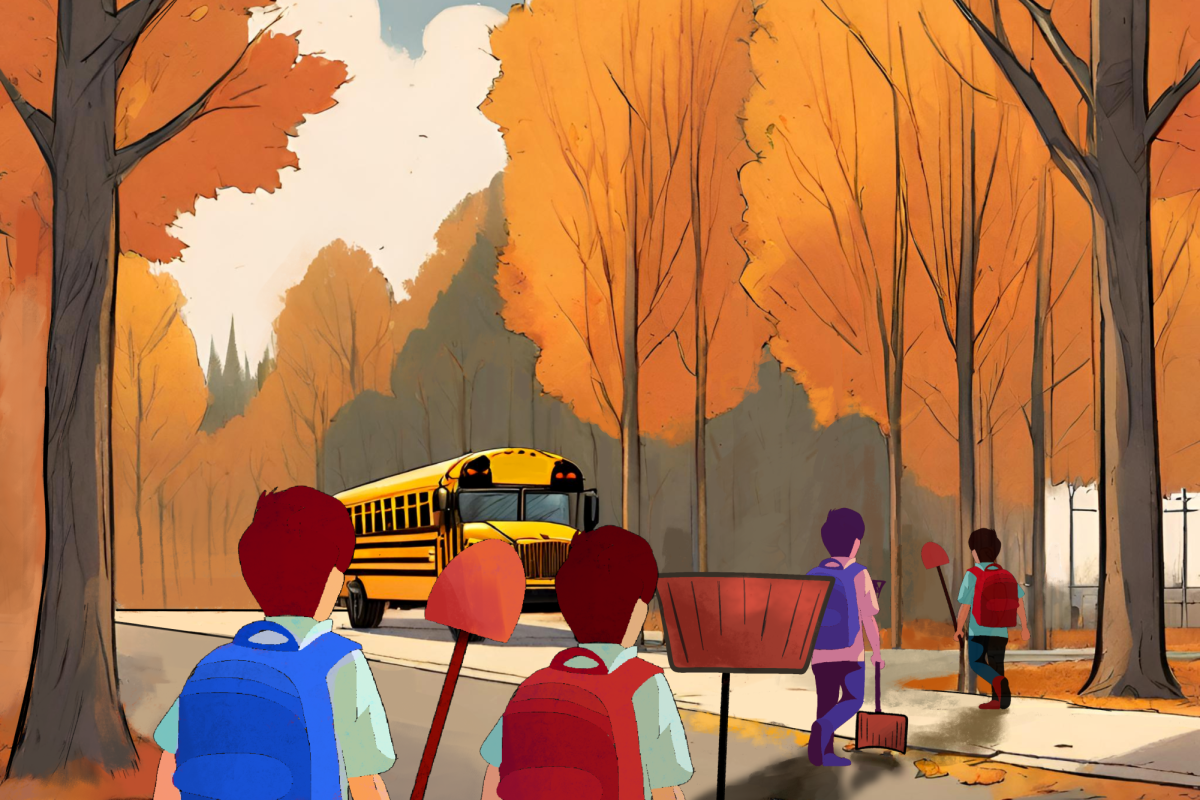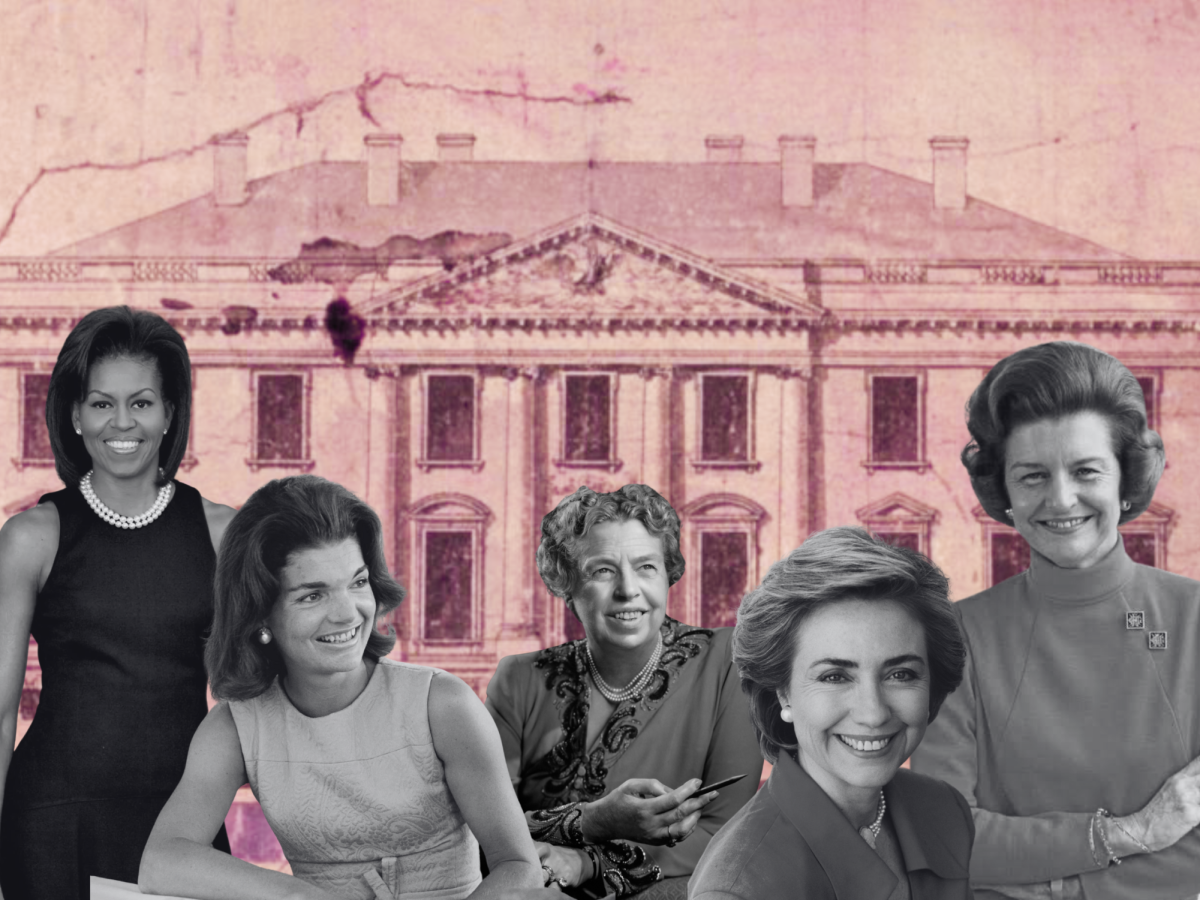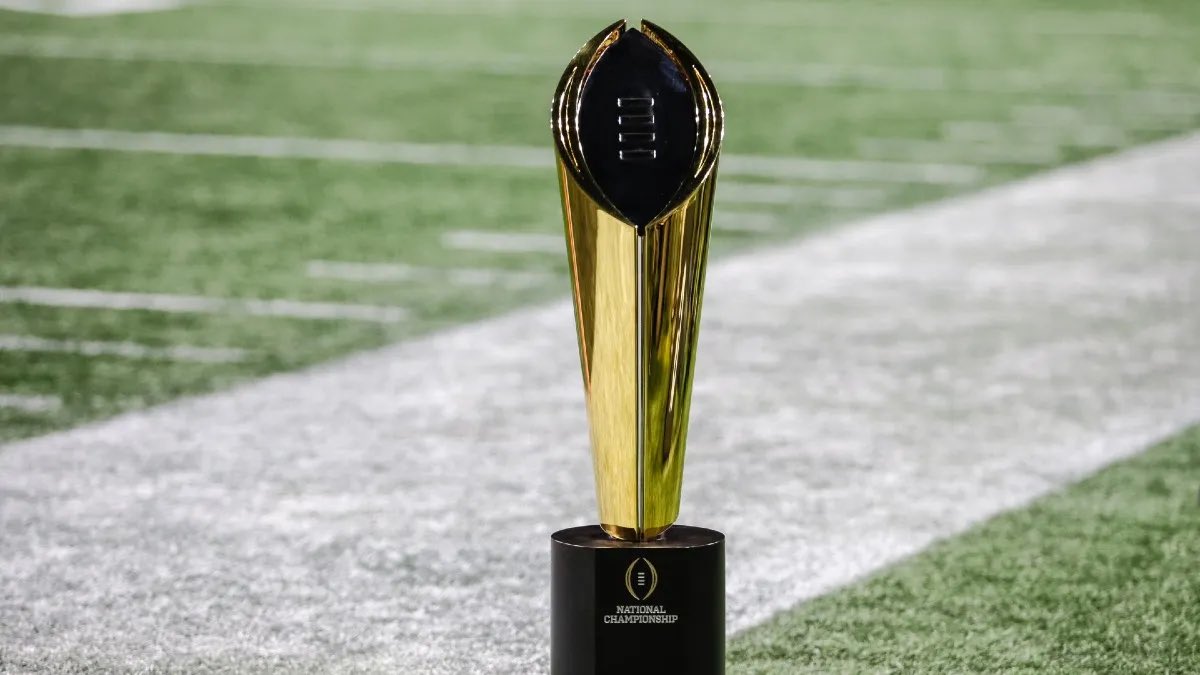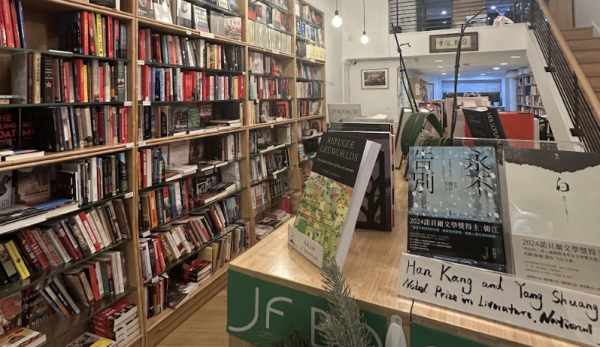Decades later, institutional segregation lives on in Bethesda
Retired State Department employee Patricia Tyson poses at her home in Lyttonsville, the Silver Spring neighborhood where she’s lived for other 70 years. Lyttonsville is one of the few communities in the D.C. area to have never had racially restrictive deed covenants, which excluded minority groups from living in parts of Bethesda and other neighborhoods.
February 25, 2021
During Patricia Tyson’s childhood, rainy days helped define her community. To Tyson, a retired State Department employee, the pitter-patter of droplets didn’t mean cozy afternoons, warm blankets or a sense of calmness. Instead, rainy days meant mud streaking through the neighborhood’s unpaved streets, making the roads so unusable that county workers had to toss gravel into the sludge so that residents could leave their community.
Problems in the area weren’t limited to roads. Running water was unavailable. Street lamps were nonexistent. Almost no residents owned a telephone. And there was no solidarity among the surrounding communities, which were full of wealthy residents who, for the most part, couldn’t care less about this bordering neighborhood.
Such a community may sound foreign to many Whitman students, but Lyttonsville, where Tyson has lived for over 70 years, is a mere 15-minute drive from Whitman.
Until its demolition in 2019, only the Talbot Avenue Bridge separated Lyttonsville from downtown Silver Spring, where more affluent lifestyles were — and still are — the norm. But there was one major difference between the communities: Lyttonsville, unlike many neighborhoods in the D.C. metro area, had no racially restrictive deed covenants that excluded Black families like Tyson’s from living within its borders.
Deed covenants are provisions in legal documents that outline conditions for owning a property. At face value, deed covenants aren’t necessarily discriminatory; they might dictate that property owners may only use school grounds for school-related reasons or that homeowners can’t use certain hazardous materials to refurbish a property. However, until the late 20th century, real estate companies imposed covenants on communities and properties that barred minority groups from living in parts of cities like Silver Spring and Bethesda.
“The saying in Black communities was that you could always find the N—o community on the other side of the railroad tracks, and that seemed to separate most white communities from those who were African American,” Tyson said. “Well, the railroad tracks really did divide us.”
Racially restrictive covenants became widespread in neighborhoods across the country after the 1926 Supreme Court case Corrigan v. Buckley upheld their legality. In Bethesda, racial covenants appeared as early as the 1930s, excluding African Americans and, many times, Jews and members of other minority groups.
Although the Supreme Court ruled it unconstitutional in 1948 for state courts to enforce racial covenants, it was decades until the practice ended. It wasn’t until Congress passed the Fair Housing Act of 1968 that most of the real estate companies writing discriminatory covenants stopped doing so.
A Maryland law took effect Oct. 1 that streamlines the process for residents to remove discriminatory covenants from their homes. In Bethesda, many neighborhoods, including Kenwood, Wood Acres, Chevy Chase and Sumner, still have the old covenants of record, though they’re no longer enforced.
“The written word is powerful,” Tyson said. “Even today, even though people can buy wherever they want to, there are still some communities in Montgomery County that are not actually wide open.”
Hate-based exclusion
In the late 1960s, former D.C. resident Max Berry and his late wife, both Jewish, were searching for a house where the young couple could raise a family. They stumbled across a one-story home in Kenwood that, although it stood apart from the neighborhood’s larger houses, Berry thought was “just lovely.”
“It looked like an English cottage,” Berry said.
But after Berry mentioned the house to some of his Jewish friends, he began to worry that it wasn’t the right place for him and his wife.
“They said to me, ‘Max, you better be careful,’” Berry said. “‘You’ll be harassed and not welcomed.’”
Although the Kenwood real estate development company had stopped enforcing the neighborhood’s racial covenants by the time Berry began house-hunting, the covenants had led to a widespread prejudice against Jewish and Black people among residents, Berry said.
Berry grew up among few other Jews in Tulsa, Oklahoma, a city that exposed him to vitriolic anti-Semitism, he said. Unwilling to relive the terrors of his childhood when peers would grab and feel his head for horns in elementary school, Berry scratched the Kenwood home from his list. He and his wife instead bought a home in Forest Hills, a neighborhood in Northwest D.C., which was known as “Hanukkah Heights” because of its sizable Jewish population. Forest Hills had fewer racially restrictive covenants than most neighborhoods in the D.C. metro area, which led to an influx of minority groups, particularly Jews, moving into the community during the mid-to-late 20th century.
In contrast to Berry’s decision against living in Kenwood, his friend Leo Bernstein later moved to the neighborhood and suffered consequences, Berry said.
The late Bernstein, a Jewish philanthropist and prominent D.C. real estate broker, was conscious of the challenges that racially restrictive covenants posed; in the late 1930s, he sold a D.C. home to a Black family despite a racial covenant in the neighborhood. Bernstein was well aware of the fact that he might not be received well in Kenwood when he bought a house there in the late 1960s, but he wanted to pave the way for other members of minority groups, Berry said.
After moving into Kenwood, Bernstein began receiving phone calls every morning at 3 a.m. telling him to “get out,” which initially didn’t bother him.
“He was a tough guy,” Berry said. “He said, ‘I don’t give a damn. I’m going to fight, and they’re not going to get me out. I’m tougher than this.’”
But Bernstein’s confidence didn’t last long, Berry said.
“Three months later, Leo told me at a lunch that he moved out because he couldn’t take it anymore,” Berry said. “He was losing sleep. He was harassed. He was bothered at night. His family was scared. He just wasn’t going to take it anymore.”
Tyson, who has lived in Lyttonsville for nearly all of her life, never resided in an unwelcoming community like Bernstein did. Instead, she noticed clear disparities between her community’s lack of resources and the relative affluence of downtown Silver Spring, she said. This insufficiency was compounded by the fact that it was hard for Lyttonsville residents to gain social mobility; the closest bus service to her house was a mile away, and other Silver Spring residents didn’t help.
“People on the other side of the bridge didn’t want people to come to their neighborhood unless you worked for a family in that area,” Tyson said. “It was like a world within a world.”
A lasting legacy
Today, Bethesda is not only majority-white but overwhelmingly lacking in residents of color. 81.5% of community members are white while just four percent are Black, according to the 2020 U.S. census. The Whitman student body reflects this lack of diversity; in 2019, almost 70% of students were white and less than five percent were Black, according to data released by MCPS.
These figures conflict with the fact that 13% of Americans are Black, but they line up perfectly with the area’s racial covenant-heavy past, said historian Mara Cherkasky, who developed the project “Mapping Segregation in Washington D.C.” Cherkasky, who has plotted tens of thousands of D.C.’s discriminatory covenants on a virtual map, said that the covenants have often led to lasting hateful undertones in neighborhoods.
“The whole system of racially restrictive covenants is a big example of systemic racism,” Cherkasky said. “What you see is that white people are afraid of Black people just because they haven’t lived with them.”
This is one reason why the covenants are still significant: they hinder the growth of diversity in communities like Bethesda, Cherkasky said.
Black Student Union President Gabriel Thomas, a senior, said Bethesda’s history of institutionalized segregation has made him feel like “the needle in the haystack” his entire life. Thomas lives among few other Black families in his Glen Echo-area neighborhood and has been called the n-word multiple times at Whitman, he said.
“White people usually have the privilege of going to school with people that look like them,” Thomas said. “I haven’t really had that experience. For the longest time, there’s been a gap between students in Bethesda. This is a community. We all live together, and we shouldn’t feel separated when we’re all so close to each other.”
Jewish Interfaith Group Co-President Claire Shnerson, a senior, said she hasn’t experienced anti-Semitism in any form worse than microaggressions but that she and her Jewish peers often lean on each other for support in her Bradley Hills neighborhood.
“It’s like an entire little bubble that has a bunch of Jewish people in it,” Shnerson said. “It’s just easier to live somewhere where you’re understood.”
Only four percent of adults in the D.C. metro area are Jewish, though that number is still higher than the two percent of Americans who identify as Jewish, according to a 2014 Pew Forum study.
Although racially restrictive covenants played a significant role in shaping the lives of Jews and other minority groups, the W.C. and A.N. Miller Development Company — a firm that developed Sumner and many other local communities impacted by racially restrictive covenants — doesn’t advertise its history. It has its name plastered on many of the real estate signs that dot the front yards of Bethesda homes and, after Long & Foster Realtors purchased the business in 2007, currently employs over 100 associates. Yet in the “Company History” section on the firm’s website, there’s only one word: “Forthcoming.”
A representative from the company declined to be interviewed for this article.
The effect of these racial covenants remains in the Whitman community today. In the past two years alone, there have been two discoveries of racist graffiti on school grounds for which several students ultimately claimed responsibility, an incident in which students posted photos of themselves wearing blackface on social media and continual reports from Black students who have been called the n-word among other derogatory slurs in Whitman’s hallways. Staff members responded to the initial blackface incident by forming the school’s OneWhitman initiative, which intends to combat hatred and educate students about the dangers of bias.
The program has continued during remote school, and OneWhitman sessions in October and November focused on institutionalized segregation in the community. Following a video about redlining during an October lesson, a student expressed shock in a breakout room discussion that the lesson was optional in contrast to the school’s compulsory Social Emotional Learning sessions, a countywide initiative to help students cope during the pandemic. Still, the discussion was progress, the student said.
Like the Whitman administration, MCPS is attempting to remedy the covenants’ legacy.
The Board of Education voted on Nov. 10 to rename Col. E. Brooke Lee Middle School to Odessa Shannon Middle School. Edward Brooke Lee, a Maryland politician, advocated for the use of racial covenants throughout the 1960s and made millions of dollars by developing segregated communities in Montgomery County. Odessa Shannon was a civil rights activist and the first Black woman elected to public office in the county.
“Mr. Lee’s name did not reflect the true values that we hold dear to MCPS,” said Board of Education member Patricia O’Neill. “I’m pleased that we have made that change. I hope that it will be a positive for the students for generations to come.”
Tyson, too, sees the community moving forward. In September 2018, she and 200 of her neighbors attended a ceremony celebrating the centennial of the completion of the Talbot Avenue Bridge, Tyson’s only childhood link to neighborhoods with discriminatory covenants. She listened as the president of the North Woodside-Montgomery Hills Civic Association read a resolution disavowing racial covenants and affirming the group’s hope for a more inclusive future.
“We have been a divided neighborhood brought back together by the advancement of education and the movement to get the founding documents right,” Tyson said. “We come a little distance, and things get better. Then we recognize that we’re not there yet, so we come another distance. We just keep working until we get to a fair day — a good day — when America will live up to the promises and creeds it espouses.”




